San Francisco may have some of the most expensive real estate in the world, but the California city is a surprisingly affordable place to spend a summer weekend — or even a week. The views are beautiful, and just walking around the city and taking them is a no-cost pleasure. But there are plenty of other very cool ways to savor SF’s stunning geography, unique history, and cultural treasures that cost nothing, or almost nothing. From hiking along cliffs within city limits to exploring where the hippie movement was born, here are 11 of our favorites.
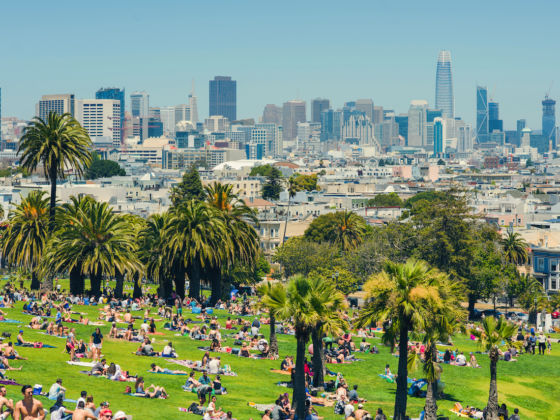

The Best Free (and Almost Free) Things to Do in San Francisco
1. Snap a photo in front of the Mission Murals.
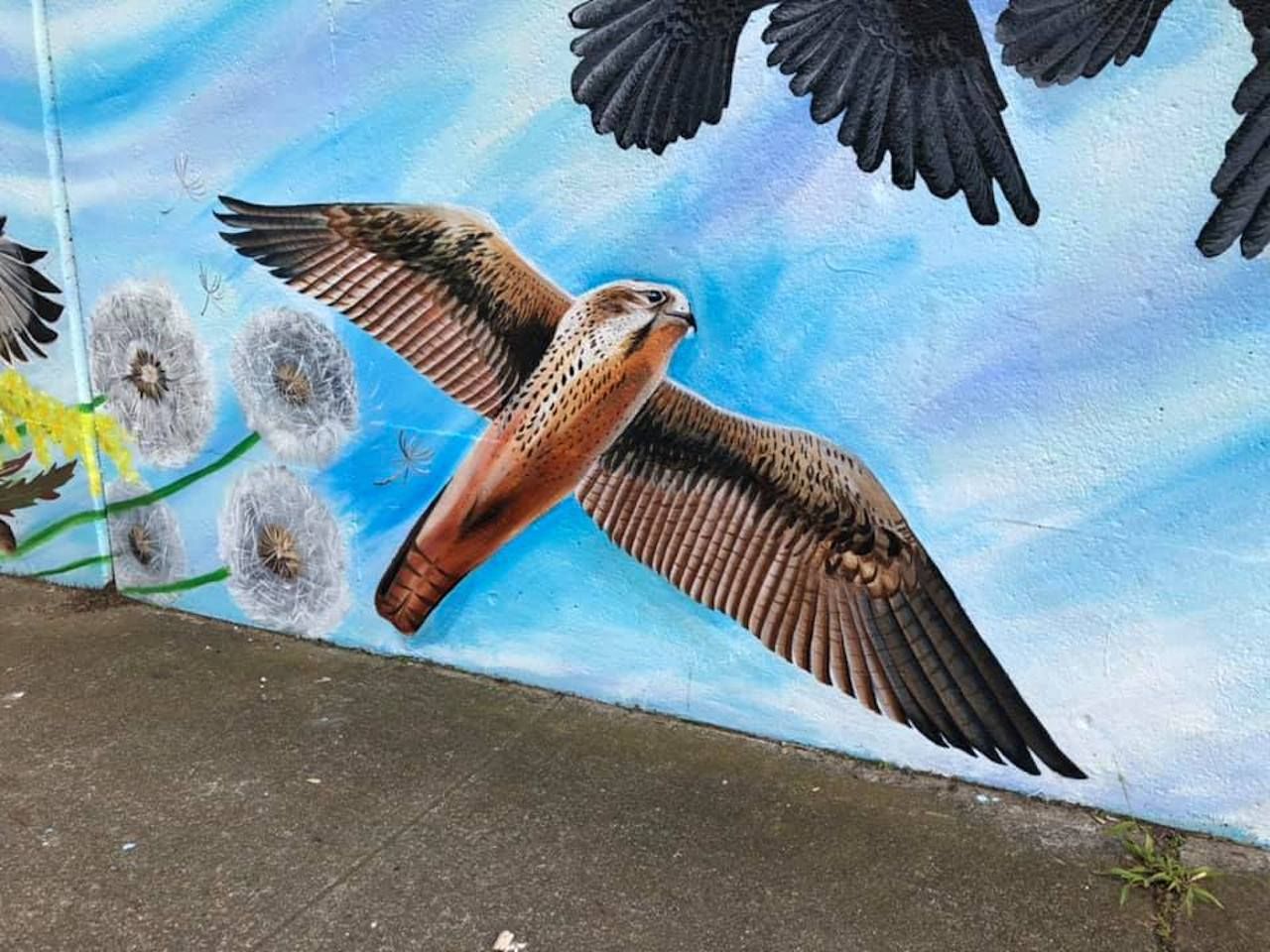
Photo: Precita Eyes Muralists/Facebook
While it seems like big cities around the world are rushing to embrace street art and Instagrammable facades, these have been a fixture of SF’s Latinx Mission neighborhood for decades. You’ll see murals all over the neighborhood, but for an immersive street art experience, walk on Clarion Alley at 16th Street and Mission or on Balmy Street just off leafy 24th Street. The murals touch on everything from life in rural Central America to the current immigrant experience, with sometimes subtle and occasionally heavy-handed symbolism. The murals have been kept up by the Precita Eyes Muralists Association since 1977. After exploring the murals, grab a Mission-style burrito in the ‘hood where they were invented; Papalote and Pancho Villa’s massive burritos are pretty much lunch and dinner combined and cost less than $10.
2. Ascend the de Young Tower, then have a cup of coffee.
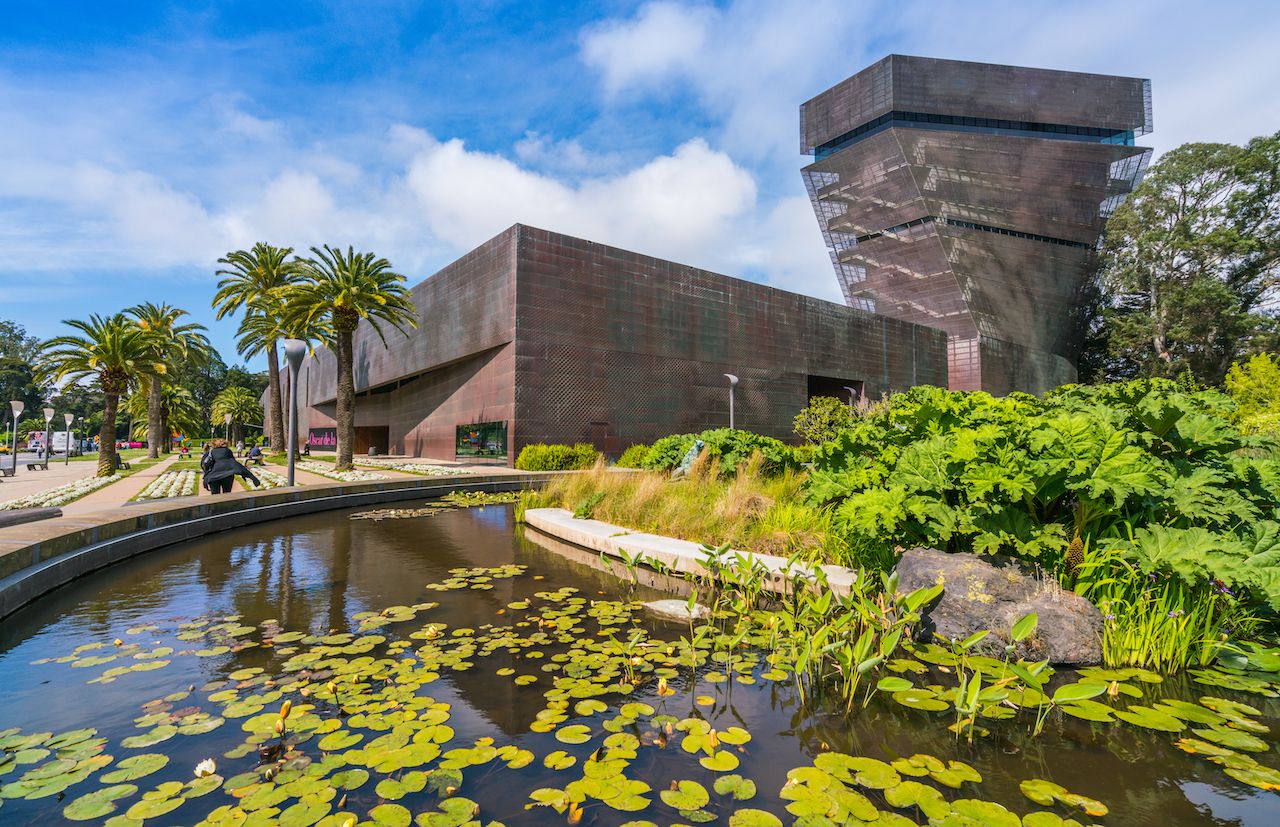
Photo: Checubus/Shutterstock
The de Young Museum is an architectural stunner, and the collections inside are inspiring. But adult tickets are $15 each. Skip the admission fee, but go inside anyway — it’s free to enter the lobby and a few other key zones. On your way inside, you’ll pass the Drawn Stone sculpture by Andy Goldsworthy. Head to the elevator lobby and check out the ethereal wire sculptures by celebrated local artists, Ruth Asawa. Then take the elevator up to the museum tower. When you exit, you’ll have views of Golden Gate Park, the Marin Headlands, and northwest San Francisco. Once you’re back down, walk to the de Young Cafe. Order a cup of coffee, or nothing at all, and walk out the glass doors to the sculpture garden. Walk inside the Three Gems dome by James Turrell, sit down, and ponder the tiny circle of sky you can see above. It’s a contemplative moment, and it’s free.
3. Hang out in Dolores Park.

Photo: canadastock/Shutterstock
On a sunny weekend afternoon, Dolores Park is the place to be. It lies at the crossroads between the multicultural Mission neighborhood, family-oriented Noe Valley, and gay-friendly Castro District. Sloped as it is, it offers big vistas of downtown San Francisco. Take a walk around and you’ll find the dog-owners zone, the hipster area, the family fun place (made obvious by the play structures), the LGBTQ locale, and other less easily defined spots. You could opt for some pick-up basketball or head across the street to Bi-Rite Creamery, which probably invented salted caramel ice cream. The frozen treat is not actually free, but it’s worth every penny.
4. Explore the shops of Chinatown.
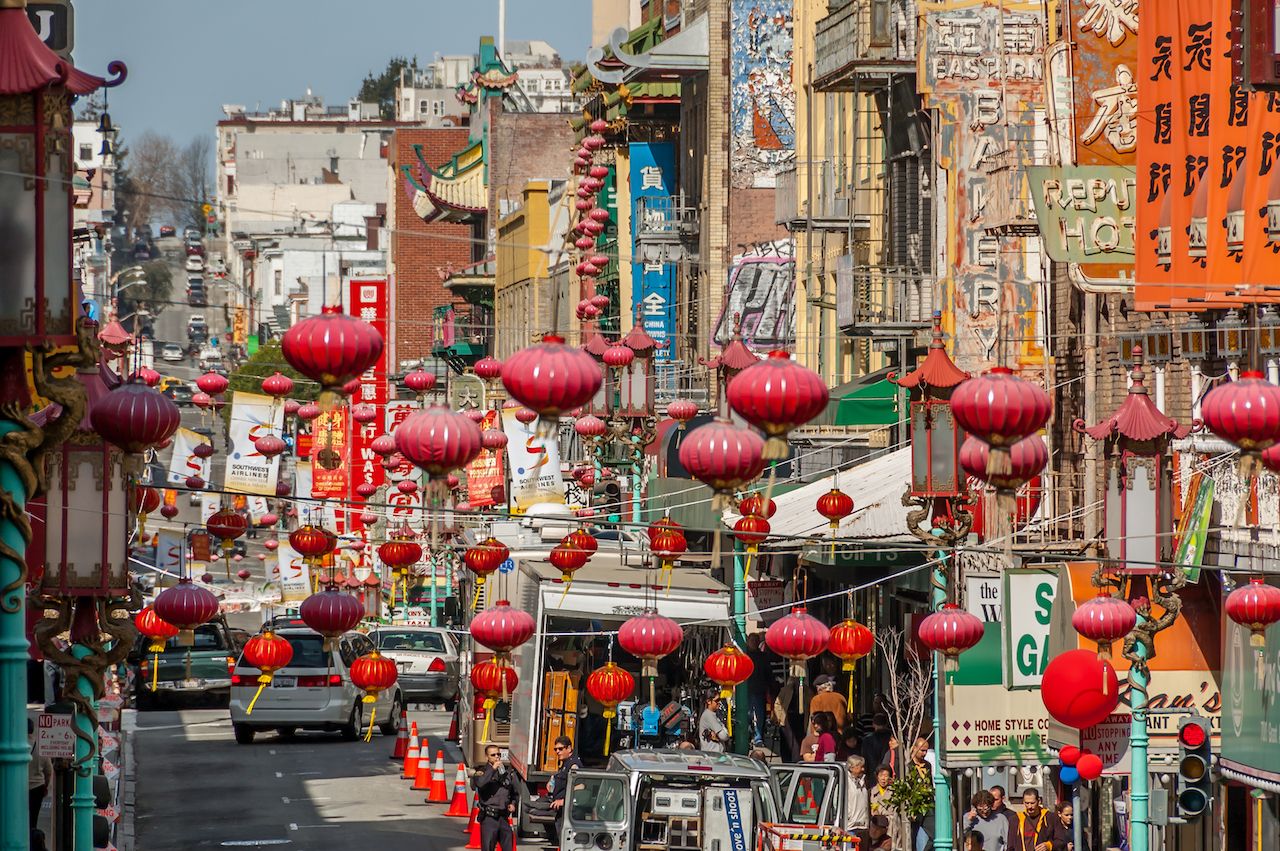
Photo: Jeff Whyte/Shutterstock
Most tourists cross the Chinatown’s Dragon Gate at Bush street and make their way up Grant Street. While Grant Street is certainly colorful and festooned in festive red lanterns, it’s not where local Chinese immigrants spend their time. Work your way over to Stockton Street, walking first through Waverly Place to take in the painting balconies and then to Ross Alley for Golden Gate Fortune Cookie Factory to see the flat cookies filled with fortunes and folded by hand. Once on Stockton Street, you’ll see Eastern pharmacies selling herbs and other unidentifiable items, stores selling imaginative paper goods that are burned at funerals, and markets hawking live seafood and unusual produce.
5. Walk in Crissy Field.
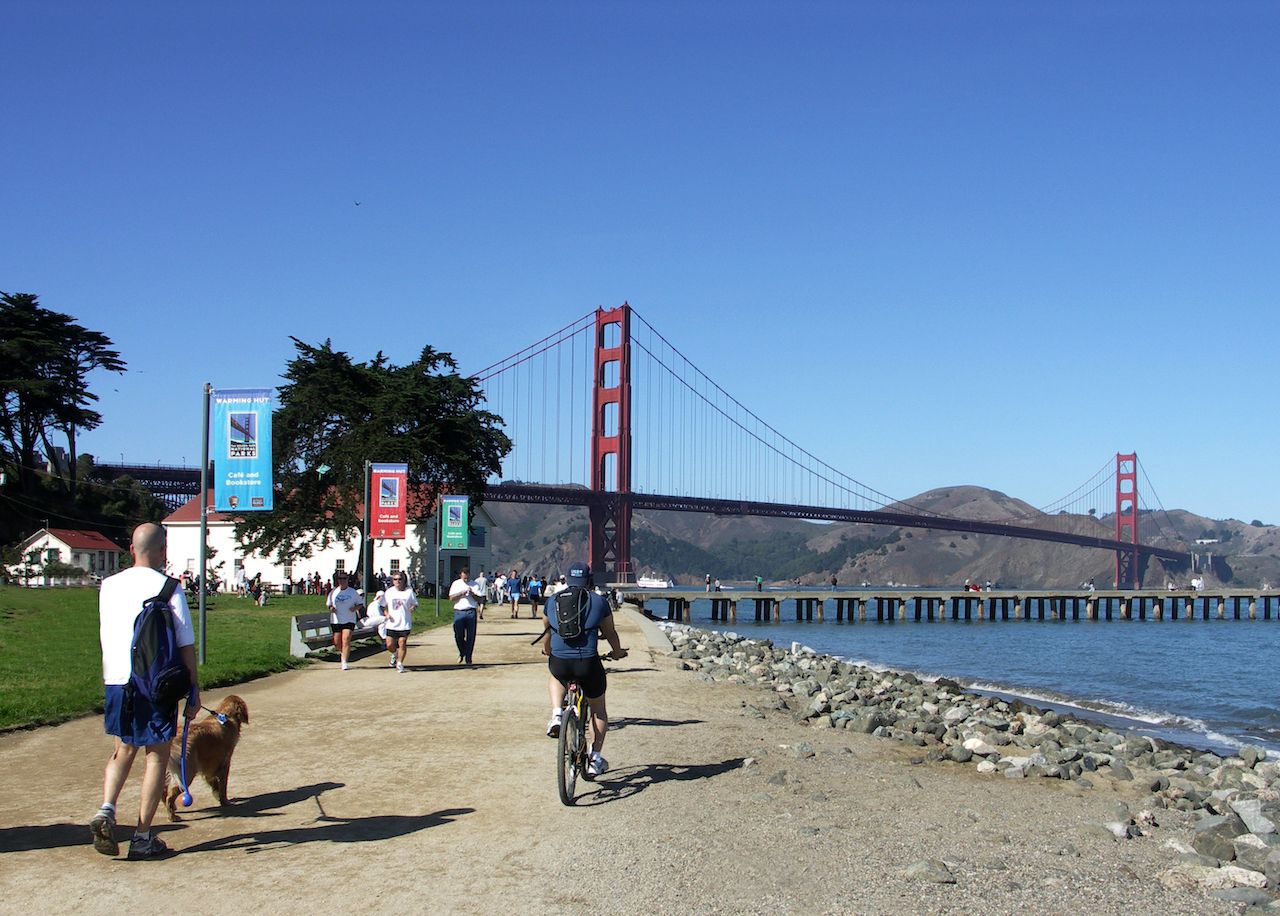
Photo: Lynn Watson/Shutterstock
For decades, this area at the mouth of the San Francisco Bay, a shuttered military airstrip, was best known as a take-off spot for windsurfers. After much work by the National Park Service and volunteers, Crissy Field reopened as a park in 2001, with an enclosed wetlands area and a three-mile path running alongside the bay. Offering non-stop vistas of the Golden Gate Bridge, the bay, and the SF skyline, Crissy Field instantly became a favored place for locals to walk or jog, or to take the kids on a weekend morning.
On your morning walk in Crissy Field, you could stop along the way at the free Greater Farallones National Marine Sanctuary, located in a historic white house and open Wednesday to Sunday, for information on the local sea life, or continue to the The Warming Hut Bookstore & Cafe for a latte. If you walk beyond the cafe, you’ll reach Fort Point, a sturdy brick 1850s structure erected to defend the bay. It’s open weekends, but even when it’s closed, it’s a fun spot to watch the intrepid surfers who ride the waves that wrap in under the Golden Gate Bridge. At the opposite end of Crissy Field is East Beach, where kite-surfers launch themselves into the choppy water of the bay once the afternoon winds pick up. A good walk beyond East Beach is the Wave Organ, a wacky structure that uses the movement of the waves, especially at high tide, to make music.
6. Hike in Lands End.
Photo: Aerial-motion/Shutterstock
You may not always think of hiking on your vacation, but we believe you should. In any case, a walk on Lands End will make you appreciate just how incredible the corner of the world is. You’ll take in the wild Pacific Ocean over a hundred feet below you, the golden hills of the Marin Headlands across the bay, and the Golden Gate Bridge from outside the bay — an angle that most tourists don’t see. You’ll observe graceful Monterey cypress trees on the Lincoln Park public golf course and maybe even spot surfers at a crazy spot below you called Dead Man’s. You can also walk to a labyrinth near the water or explore the remnants of the Sutro Baths, built in 1894 to hold up to 10,000 people at a time. Stop in for info and a not-free coffee at the Visitor Center.
7. Check out the boats at the Hyde Street Pier.
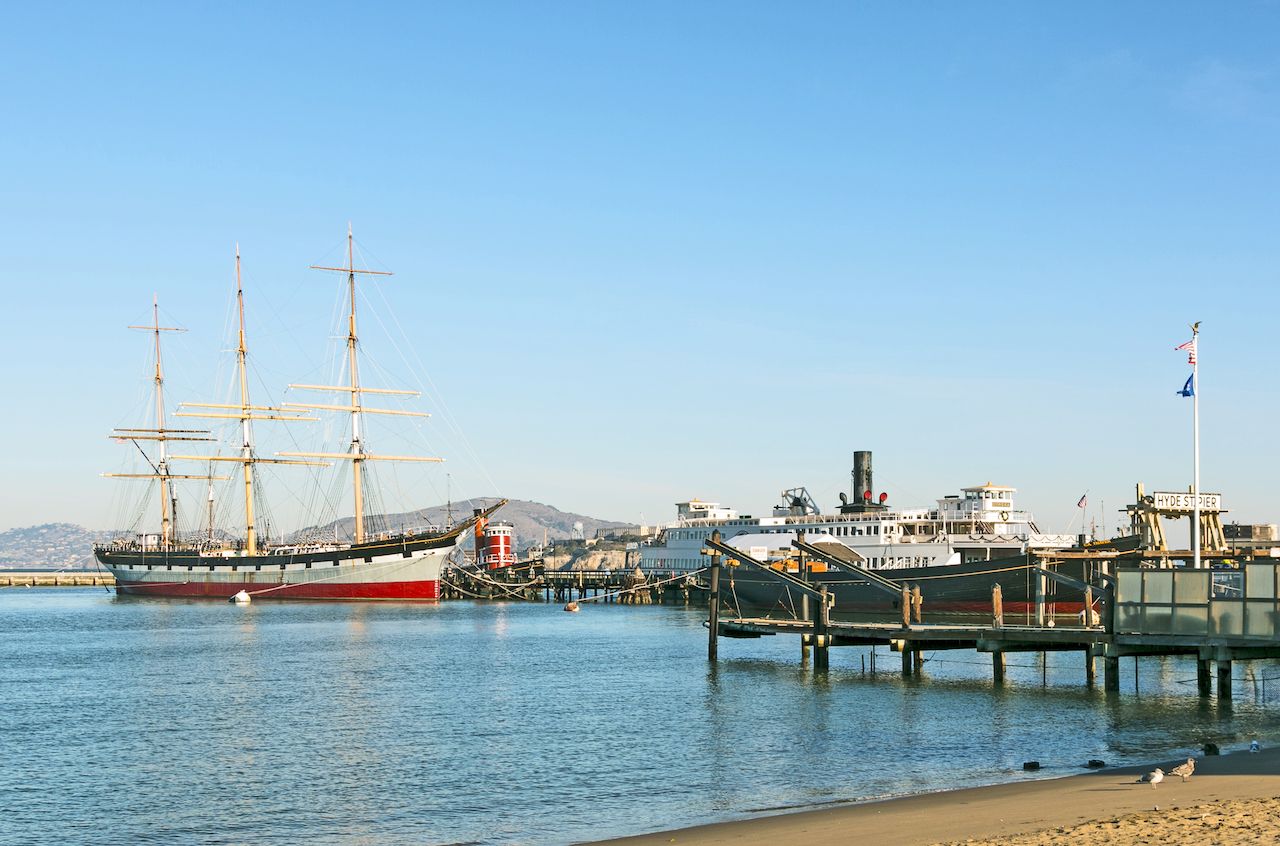
Photo: travelview/Shutterstock
Most of Fisherman’s Wharf is a sea of tourist t-shirt shops. But head to the far end of the wharf near Ghirardelli Square and walk onto the Hyde Street Pier. It’s free to stroll on the pier and only a few dollars to enter the historic boats. The majestic Balclutha, an 1886 square-rigger with massive sails, is out for repairs but is expected back soon. The antique cars on the 1890 steam ferryboat Eureka and even the 112-year-old steam tugboat are all fascinating, and they give you a sense of how important SF’s waterside location has been to its history.
While on the pier, look west at the body of water in front of Aquatic Park. You’re likely to see people swimming without wetsuits in the bay’s 54-degree water. Those hardy nuts are part of the Dolphin Club, whose members have been braving these waters since 1877. If you’re still curious about SF’s maritime history, head across the street from the pier into the San Francisco Maritime Visitor Center. You’ll find a massive lighthouse bulb, replicas of boats, and other cool exhibits — all for free.
8. Window shop in Haight-Ashbury.
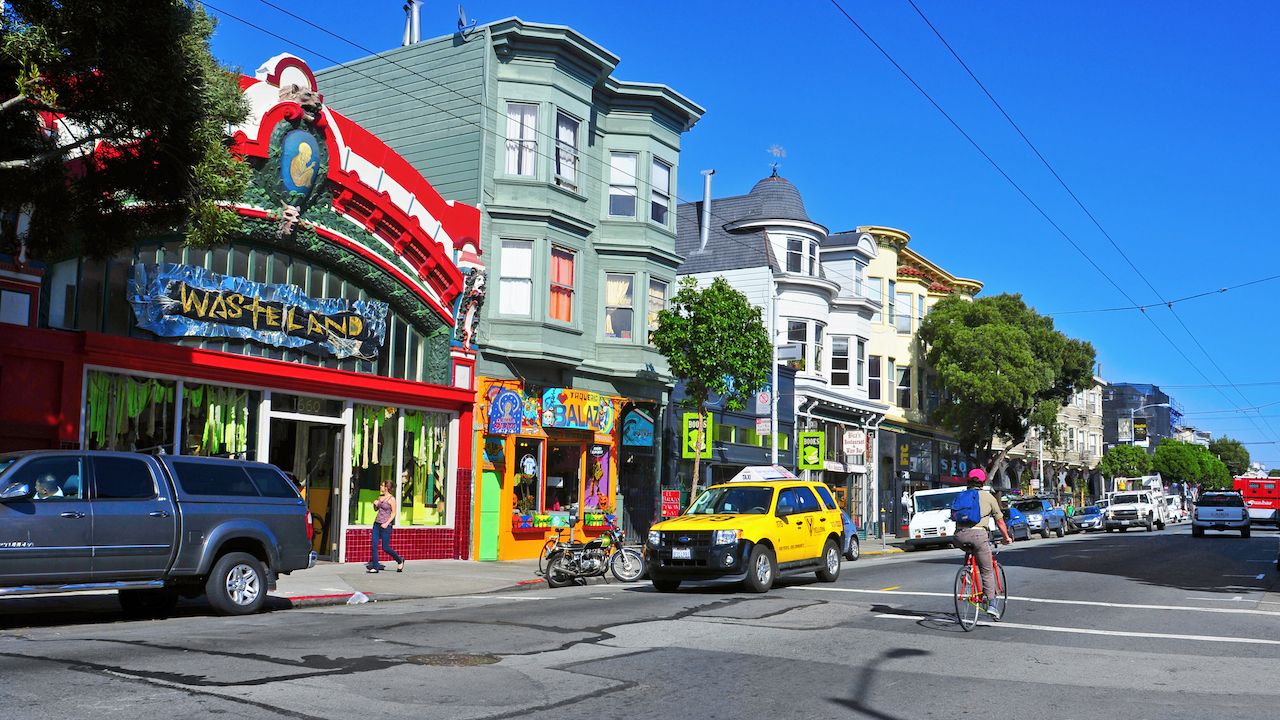
Photo: nito/Shutterstock
The epicenter of the 1967 Summer of Love and the nation’s anti-war hippie movement was in San Francisco, in this very neighborhood. Members of Jefferson Airplane and The Grateful Dead, as well as Janis Joplin, were among the musicians who called these streets home. Today the area is better known for its head shops, its Amoeba Music record store, and wacky boutiques that are must-stops before the annual Burning Man Festival in Nevada. Window shopping is pretty satisfying, but you may want to actually buy something on Haight Street. A few newer stores are ludicrously overpriced, but you could just as easily find a great, new disco dress for $14 at the shop next door. The secondhand shopping options are enviable. Stop for a snack at StreetTaco or just pick up at ice cream at the Ben & Jerry’s on the corner of Haight and Ashbury streets.
9. Stroll the Embarcadero and wander the Ferry Building.

Photo: telesniuk/Shutterstock
Stretching from AT&T Park to Fisherman’s Wharf, the Embarcadero Promenade is a great place for a stroll, with some big public art — include an enormous Cupid’s being shot into the ground — closer towards the ballpark. If you want to walk a smaller length of it, though, stay near the San Francisco Ferry Building. Along the promenade, you’ll see metal plaques in the sidewalk, as well as 13-foot-tall columns, featuring photographs, poems, and stories about San Francisco. Then walk into the Ferry Building, the epicenter of SF’s organic, sustainable, and delicious food scene. You’ll see shops specializing in mushrooms, olive oils, award-winning cheese, or chocolate, to name a few, as well as a less-crowded outpost of the famous ice cream shop Humphry Slocombe.
If it’s Saturday morning, the sprawling Ferry Plaza Farmers Market is a great place for free samples or fruit, bread, and other tasty bites — or even to buy an excellent breakfast from a food cart. A smaller version of the Saturday market occurs mid-day on Tuesdays and Thursdays in front of the Ferry Building. All this food will make you hungry. To keep things in your budget but stick to the area’s sustainable and tasty food ethos, get a sustainable (or Impossible) burger or fish tacos at Gotts on the west side of the Ferry Building, and enjoy it at a picnic table outside.
10. Climb a lot of stairs through a secret garden, then look at socialist art.
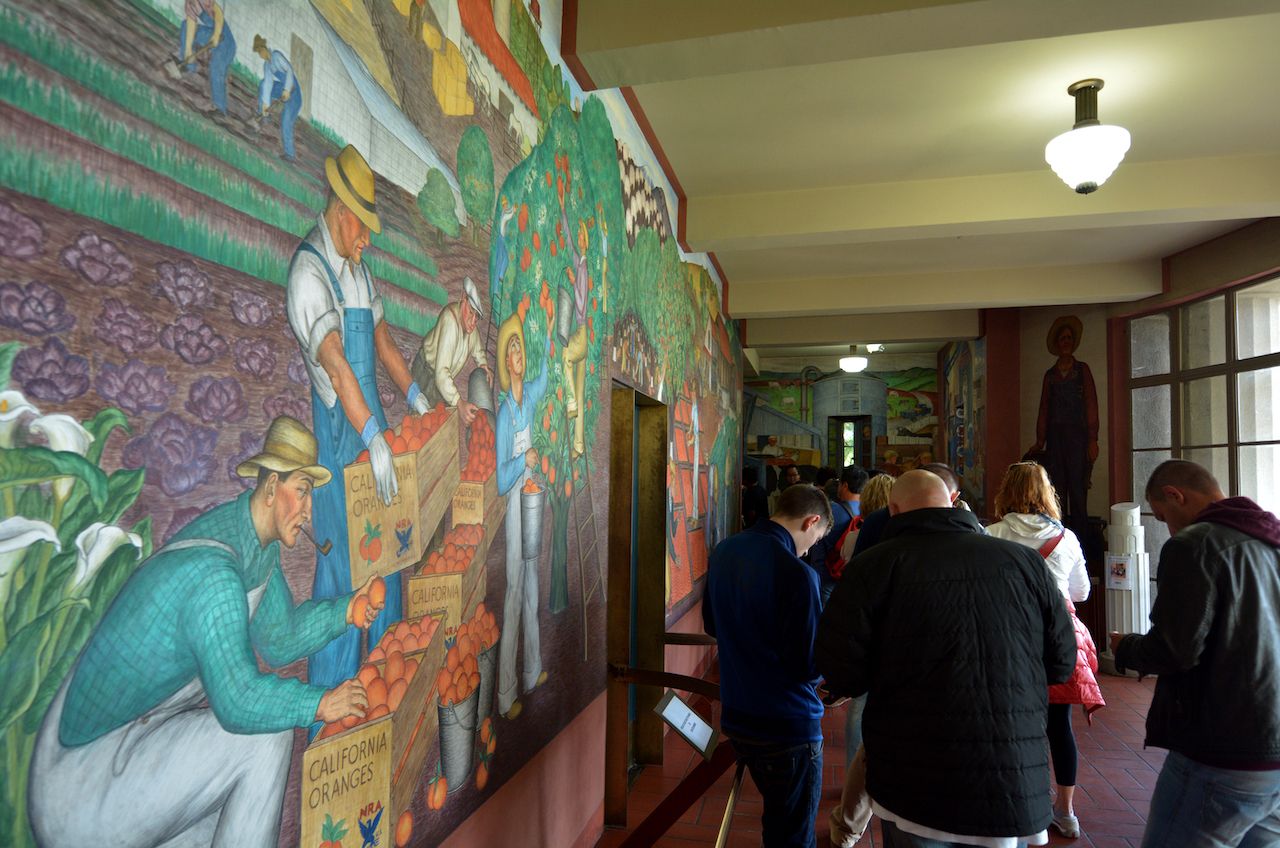
Photo: ChameleonsEye/Shutterstock
You could drive right up to Coit Tower or take a Muni, as locals call SF buses. (The Muni isn’t free, but it’s $2.35 if you pay on the spot.) Or you could take the really hard way and walk up the Filbert on Greenwich Steps on Telegraph Hill. These parallel stairs are steep, but they climb through beautiful private gardens filled with colorful flowers and birds, and some of San Francisco’s most expensive real estate.
Once at the top, choose to pay $9 (for adult non-residents) to ride the elevator up Coit Tower, or save the money and just take in the awesome city views from the parking lot instead. Whichever you choose, be sure to still step inside Coit Tower to check out the murals inside the base of the tower. In good socialist fashion, they’re free to visit.
The murals were painted in 1933 by dozens of students of Diego Rivero, one of Mexico’s most celebrated artists and onetime husband of Frida Kahlo. They were commissioned by the Public Works of Art Project, one of FDR’s New Deal endeavors to get people back to work after the Great Depression. The paintings depict farmers, workers, fishermen, and ordinary citizens in SF and the Bay Area. The whole thing was decried by conservative idealogues who saw Communism everywhere they looked — making the murals a fascinating look at that charged political era.
If you want to see a mural by Diego Rivera himself, head to the next knoll over: Russian Hill. You can walk into the courtyard of the San Francisco Art Institute and enter the first gallery on your left. You’ll see a huge mural celebrating the worker, with thinly veiled Soviet imagery. Then head to the back of the institute for yet another sweeping view of the waterfront.
11. Watch a free summer concert or play.
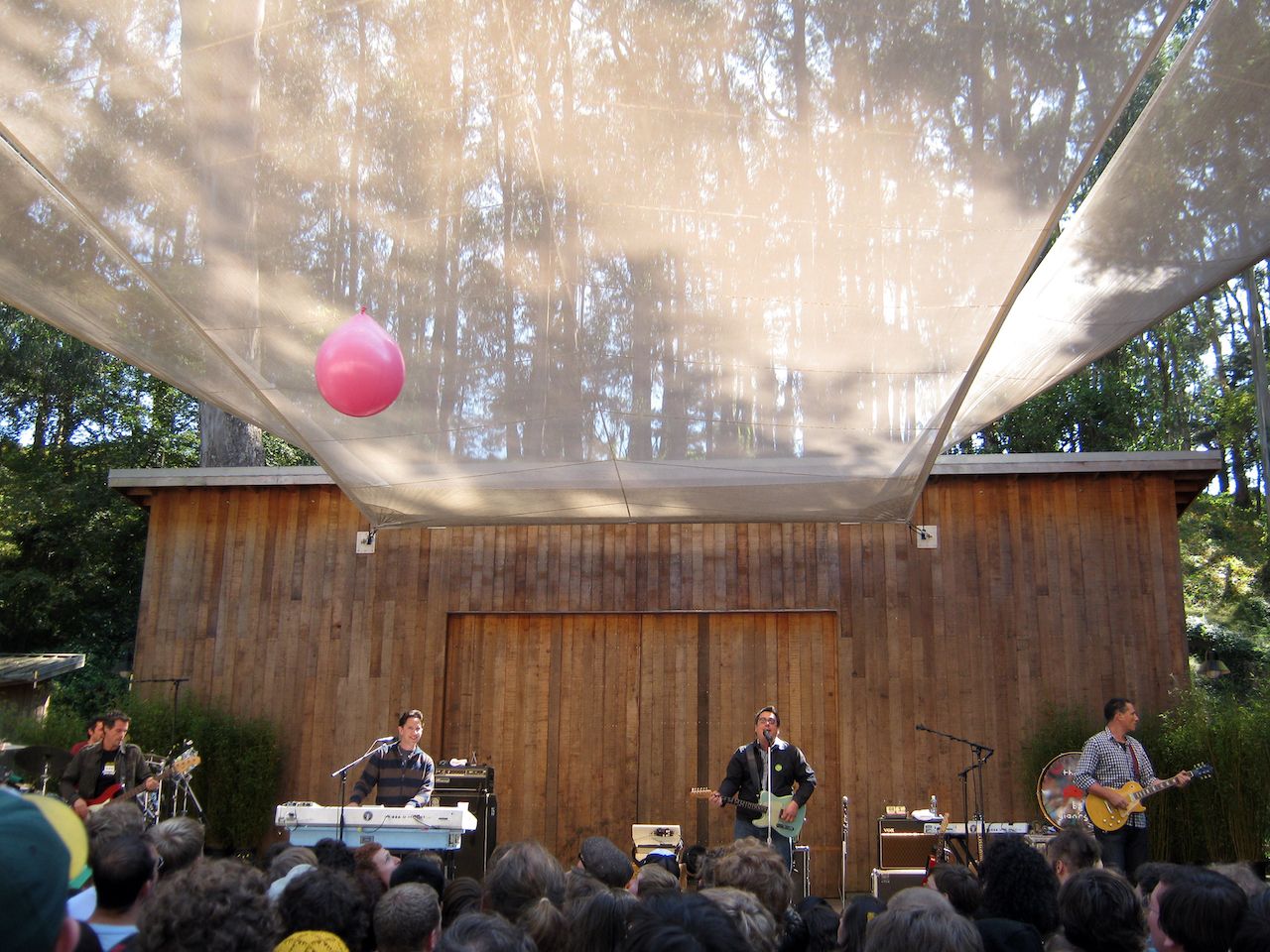
Photo: Eric Broder Van Dyke/Shutterstock
In the summer, you’ll find free music and performing arts around the city. The Stern Grove Festival features free concerts on Sundays from June to August. The setting in the trees is lovely, but be sure to bring a blanket to sit on and a warm jacket — as this part of SF can get foggy and cool at that time of year. The Yerba Buena Gardens Festival, in the downtown SoMa neighborhood, runs from May to October and features musical and theatrical acts from around the world. You can also catch free Shakespeare in the Park performances in two SF locations in September.